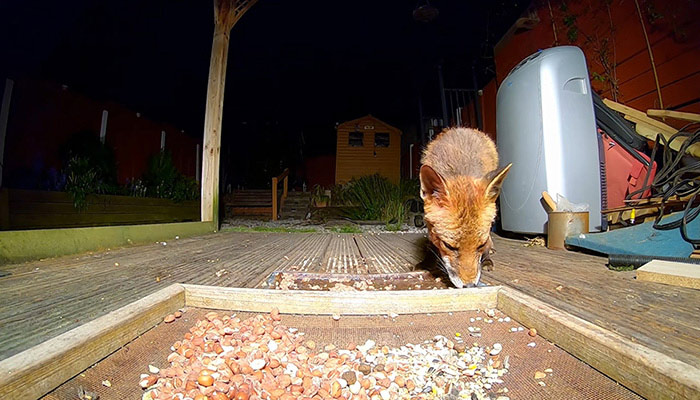A quiet revolution is unfolding in European cities. From the bustling streets of London to the green suburbs of Berlin, a new, furry resident is making itself at home: the red fox. For pest control professionals and homeowners alike, the rise of urban foxes presents a unique and complex challenge. This is no longer a rural issue but a pressing urban wildlife management concern. This article provides a professional deep-dive into why foxes have colonised our cities, the real risks they pose, and how to implement effective, humane fox control strategies that work.
From Countryside to Concrete: The Drivers of Urban Fox Populations
Understanding why foxes are appearing is the first step in managing them. Their migration into urban areas is a direct result of several environmental and human factors.
Abundant Food Sources: Cities offer a consistent and varied food supply. Unsecured garbage bins, compost heaps, fallen fruit, and even food left out for pets create an irresistible "fox buffet."
Excellent Shelter Opportunities: The urban landscape, with its gardens, sheds, decking, and unused spaces, provides perfect, predator-free denning sites.
The Lack of Natural Predators: In the city, foxes face no threat from wolves or lynxes, allowing their populations to thrive with minimal natural checks.
Legal Protection: In many parts of Europe, foxes are protected, and hunting within city limits is prohibited, granting them a safe haven.
A Professional Risk Assessment: The Impact of Foxes
For pest control experts, assessing the threat level is crucial. While foxes are generally timid, their impact should not be underestimated.
Property Damage and Nuisance: The most common complaints involve foxes raiding garbage, scattering waste across gardens. They also dig for insects and earthworms, damaging lawns and flower beds.
Public Health Risks: This is the primary professional concern.
Fox Diseases: The most significant is Echinococcus multilocularis, the fox tapeworm. Its eggs, shed in fox faeces, can contaminate soil. If accidentally ingested by humans, it can cause a serious liver infection. Although the risk of transmission is low, the consequences are severe.
Sarcoptic Mange: Foxes can suffer from mange, a parasitic skin disease that can be transmitted to pet dogs, though the direct risk to humans is minimal.
Threats to Pets: Foxes may prey on small animals, including cats, rabbits, and chickens. This predatory instinct is a major concern for pet owners.
Humane Fox Deterrent Strategies: A Modern Approach
Modern urban wildlife management prioritizes humane fox control over lethal methods. Here are the most effective humane fox deterrent techniques.
Step 1: Eliminate Food Sources (The Most Critical Step)
Secure your bins: Use lockable or robust bins with tight-fitting lids.
Stop feeding wildlife: Do not intentionally feed foxes or leave pet food outdoors.
Manage compost: Use a sealed compost bin rather than an open pile.
Step 2: Den Site Removal
Proof your property: Block off potential denning sites under sheds, decking, and porches with sturdy wire mesh buried into the ground.
Step 3: Employ Effective Deterrents
Motion-activated sprinklers: These are highly effective. A sudden spray of water is a strong psychological deterrent that conditions foxes to avoid the area.
Sensory deterrents: While motion-activated lights and ultrasonic devices can work, some foxes may become habituated to them over time.
Step 4: Scent Deterrent
Foxes have a strong sense of smell, and certain scents can be used to repel them from your garden. One effective natural repellent is a mixture of paprika and garlic. These two ingredients can be mixed and sprinkled around your garden, especially in areas where foxes may be attracted.
Another scent-based deterrent is citrus peels, such as orange or lemon peels. Foxes dislike the smell of citrus, so placing these peels around your garden can effectively repel them.
Contact Us for Aosion's Fox Pest Control Services
If you have foxes infesting your garden or property, contact us. We specialize in identifying and eliminating fox infestations using safe and effective methods tailored to your needs.
Our team of experienced pest control professionals has the knowledge and expertise to quickly identify the type of fox causing the problem and develop a comprehensive treatment plan to eliminate the infestation. We use the latest equipment and products to ensure your property is fox-free in no time.
Let's take a look at our professional devices:
Model 1: Aosion Outdoor Multi-Function PIR Sensor Sprinkler with Flashing Lights to Repel Foxes from Your Garden
A garden sprinkler with a motion detection sensor scares foxes by spraying a stream of water, or at night by stimulating them with a strong flash of light, causing them to feel uneasy and quickly leave the area.

Model 2: Aosion Outdoor Solar Fox Repellent
The flashing red night light deters foxes by mimicking the eyes of another predator. It gives foxes the impression that they are being watched in the garden, causing them to feel uneasy and quickly leave the area.

Model 3: Aosion Outdoor Ultrasonic Animal repellent for foxes
With a 110° detection angle, when a fox enters range, the sound is activated. The strong ultrasonic signal, accompanied by a bright flash of light, is not accustomed to the sound and will frighten the animal and cause it to return.

Don't let a fox infestation take over your garden or property. Contact us today to arrange a consultation and take the first step towards a pest-free environment.



